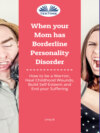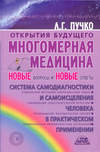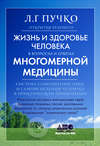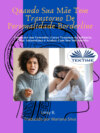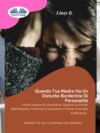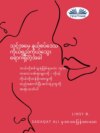Read the book: «When Your Mom Has Borderline Personality Disorder»
When your Mom has Borderline Personality Disorder
How to be a Warrior, Heal Childhood Wounds, Build Self-Esteem and End your Suffering
Linsy B.
© 2019 Linsy B.
All rights reserved.
This book or any portion thereof may not be reproduced or used in any manner whatsoever without the express written permission of the publisher except for the use of brief quotations in a book review.
Disclaimer
The advice and strategies found within may not be suitable for every situation. This work is sold with the understanding that neither the author nor the publisher is held responsible for the results accrued from the advice in this book.
Dedication
This work is dedicated to Oje and Sem, without whose help, this book would not have come to light.
Table of Contents
Copertina
When your Mom has Borderline Personality Disorder
Chapter 1
Chapter 2
Chapter 3
Chapter 4
Chapter 5
Chapter 6
Chapter 7
Conclusion
Appendix
Things You Can Do to Roll Back Your Feeling of Guilt
Here is One More Thing
Chapter 1
Introduction
No child deserves to experience what children who have Borderline Personality Disorder (BPD) parents experience in the hands of a mother who has BPD. The kids of such parents go through life suffering from the effect of chronic abuse, rage, and torture, so that they become prone to low self-esteem, social misbehavior, and depression. They are usually associated with a lot of explosive tempers, rage, frequent swings in mood, emotional instability, impulsivity, and anger, when you happen to have at least one of them as a parent, then you would know that your life could be a living hell.
So, imagine that your phone rings, and it’s your mother’s calling, it makes you anxious and then guilty, that is the experience of kids who grow up in homes where they had to grow with the trauma of living with mothers who have BPD. Children of parents with BPD live a life that exposes them to a higher risk of exhibiting difficulties in sustaining attention, low self-esteem, social anxiety, aggressive behavior, depression, and even Borderline Personality Disorder itself.
Although BPD is also present in men, women with the diagnosis of BPD make up an estimated 75% of the patient of the BPD population, which is why the emphasis tends to be put on mothers with BPD. Also, it is believed that there are over 6 million women in the United States who are diagnosed with the disorder.
The childhood of an adult who had the misfortune of growing up with mothers who suffer from Borderline Personality Disorder (BPD) is often filled with anguished, pain, chronic anxiety, and contradictions. Sometimes in an attempt to hide their real feelings, they find themselves using humor to deflect speaking about their experiences, preferring instead to speak vaguely about their lives without giving any real details to prevent painting a bad image of their mothers to anyone. Yet, their life is a tale of suffering from emotional blackmail and not knowing what behavior their mom would display at any point in time.
They may also find that they are starting life at a disadvantage of being insecure compared to other children, which makes them seem not to be able to get along with people, affecting their progress in life, slows down their careers, affects their relationship with their spouses and make them bad parents to their kids.
These children pass through different stages of their development having to cope with emotional abuse, threats, intimidation, controlling, and manipulative parents. Imagine having to be told at a very young age that you are not wanted and could be thrown out at any time, the effect it could have on the mental health of that child that frequently gets subjected to that kind of abuse which unfortunately is the lot of children who grow with BPD mothers. Women who are diagnosed with BPD symptoms make the life of their kids a living hell or a heavenly bliss in the twinkle of an eye without any prompting or anything done on the part of the child. She can suddenly perceive the kid as one not deserving of her love, which can be in sharp contrast to the very loving behavior she had displayed a couple of moments earlier.
The effects of mothers with borderline personality disorder on their children can be quite devastating. The kids are made to constantly feel as if they are living in an emotional prison and grow up feeling fragmented, confused which can lead them to develop symptoms of psychological health illnesses, mental health challenges that cause them to be impulsive, hostile, and prone to violence, suffer from anxiety, bottled up rage and depression.
Children also are at particular risk of descending or tipping over into psychosis, when under stress and faced with a real or an imaginary sense of rejection or abandonment. They may find themselves indulging in risky practices that could lead them to develop addictions as a short-term mechanism of coping and dealing with their psychological pain. The risk also of developing Borderline Personality Disorder themselves is also particularly high which is why the vicious cycle of transfer of the disorder from mother to child across different generations becomes almost like a generational cause.
Men with Borderline Personality Disorder tend to be misdiagnosed as victims of other Mental Health and antisocial personality disorders which increases the risk of them being taken out of the society through the justice system by putting them in jails which tends to aggravate their condition.
Not many people know how frustrating and draining the relationship between the child and a BPD mother can be. You have to learn to expect anything as long as a Borderline Personality Disorder parent is involved. Basic casual interactions that go on daily in other homes without incidences would deteriorate very quickly when a BPD person is involved. Even the most innocent of remarks can be considered offensive while a friendly jibe is considered disrespectful. More often than not, she will anticipate problems that have not yet occurred and react to those perceived problems as if the person has already done them and deserve the punishment she is melting out. A person with BPD has a very low capacity for understanding people’s emotions and reading facial expression, yet will consistently insist that she can read the minds of others, except that the only things she is able to read are all going to be threats of abandoning her and not being grateful enough for all the things she has been doing.
The surrounding atmosphere is always charged with negative emotions. Hardly any day passes without a story of how “such and such a person” does not like her, how that colleague is envious of her, how the neighbor is hostile to her because she believed the neighbor looked at her in an awkward manner earlier. You are better off agreeing with her, otherwise, you would be classified as a member of the gang that conspired against her. Her thinking is so rigid and fixated on her negative mindset that she does not find it difficult to conclude quickly. The emotions of her children mean very little to her and will spare no thoughts in lashing out at them in rage, assaulting them verbally, and belittling them when speaking to them.
Many kids generally conclude that their BPD mother doesn’t like them and when they happen to have a father who understands the situation, the best memories of their childhood may be only those that involved their fathers, especially when he protects the child from the destructive actions of the BPD mother and sometimes tries to compensate for the lack of love from the mother by showering the child with high doses of love.
Usually, in such situations, the father has to bear the brunt of their mother’s venom for trying to stand up for the kids. Unfortunately, such fathers and husbands do not stay very long in the relationship where regular fighting, constant guilt game, and pity party is the order of the day, not when they have a choice to either stay or leave, a choice the defenseless child doesn’t enjoy until much later in life when the amount of damage done would have been very extensive. The child basically becomes constantly sad while growing up, who wouldn’t when you have to bear the blame for anything that goes wrong in the house and all of someone’s anger is directed at you? There is rarely any moment of happiness, the lucky ones got frequent gifts, toys, and clothes, with no emotional gift but only regular yelling, and a threat of being beaten.
Because of the mother’s attitude, the adult children of Borderline Personality Disordered mothers become broken children living with a bomb that could be detonated at any time, they become insecure, feel guilty, anxious, and frustrated, living a life that is filled with a constant fear of not ending up like her. Part of their routine involves being at her side to try to console her and reassure her they are always there for her, even when they are the ones who really need more of such emotional support at that young age. As the child grows and leaves home, various events will continuously remind the child of their history with their mother, the criticism and the venom that leaks out from the mouth of their mother, the number of times they had to watch their mother as they moved from one impulsive behavior to the other yet transferring the blame on everyone but herself for the chaos she felt in her life. The child lives a life where he is not sure how long he is going to have a mother because of a constant threat of her being a danger to herself and others, leading to confusion in the heart of the child if he really wants that kind of mother.
Despite all of these, adult kids of mothers with BPD constantly feel pity and love for their mothers. They bend over their back to love and care for her, and at some moments it would seem that such love is being reciprocated, only to have the rug pulled out from your feet, and then it evaporates in a fit of rage or disappointing inappropriate remark. Yet, when she senses that you are fatigued and beginning to withdraw from her, she accuses you of not caring and questions your loyalty to her, despite all she has to go through in life because of you. And then the cycle continues.
As a BPD child trying to break free, you will have to learn to set boundaries and know how to resist when she applies her guilt game as she constantly pushes against those boundaries. You will also have to know that you cannot be held responsible for actions that are not within your control and have to make them take full responsibility for taking their medication, going for therapy, and managing their relationships.
None of this is going to be easy and will take a lot of conscious effort on the part of the adult child of the BPD parent. Some of it may involve not going home for the holidays, changing the locks in your home, sending them to caregivers, and bracing yourself up for the life ahead of you so that you do not become as your mother was to your kids.
Living with Manipulative, Abusive, and Controlling BPD Parent
BPD mothers are known to be generally abusive, controlling, domineering and manipulative parents. They shatter the life of a child with their sustained tantrums, rage, blames, and outrages. Children of such parents are characterized by fear and timidity.
Faced with this kind of toxic attitude, the child becomes increasingly cautious and careful in his or her dealings with the mother and begins to avoid having normal conversations with her. They tend to go further and further into their shell as a way of reducing their contact with the emotionally abusive mother.
The mother on the other hand who is supposed to know better often shows an incapacity of knowing that her kids suffer greatly from her parenting style, choosing instead to believe that their action is an act of love towards their kids and they become hurt and aggrieved that the child avoids her company and rarely seek her advice.
The child may out of obligation converse with the mom, formally and cordially, but never to the level that many parents would love to engage with their kids. BPD mother, unfortunately, is not emotionally tuned enough to understand the link between her action and the way the kids react to her. Some children eventually grow up to hate their mother or even wish her dead. Ironically, even the mothers may not find their reaction and anger understandable despite the pattern of abuse and neglect melted on the innocent child, the mother may believe that their actions are in the child’s best interest, borne out of love and care.
For the more considerate children who eventually have to deal with the knowledge that the reason for all their troubles have been because they were living with a woman who had BPD, they are sometimes faced with the difficulty of accepting that their mother is hopelessly incapable of insights to understand her child’s needs.
Getting past, such a level of hurt can be really tough, even with therapy, but it is worth the effort. The healing process can take the victim through a process of accepting that the situation really happened, how best to deal with it, and also how to forgive their mother even though the scar of the trauma will make it difficult for them to forget. Some adult children of BPD parents constantly struggle with the illusion that they had a beautiful life filled with love even though what they had to go through was very far from that.
Chapter 2
Borderline Personality Disorder Projection of Their Kids
Mothers with BPD tend to be very good at using the self-defense mechanism of projection of themselves to make their kids go through the kind of pains they go through. These mothers use projection as a weapon to transfer their self-concept to the child, they can either project the aspect of themselves, they idealized or aspects of themselves they devaluate to the child, depending on what mood they are at that time, resulting in the children being classified as either a good child or a bad child, a process experts have come to know as “Splitting”.
By splitting their children into either good or bad kids, BPD mothers display a typical symptom of the way BPD persons perceive other people and situations. Many adults outgrow the concept of seeing the world from a prism of being totally good or totally bad like children, by making allowances for people when they do not agree with us in various aspects since there are other aspects of the agreement. But for a BPD person, there are no gray areas, their perception can swing back and forth very quickly.
Adults who grew up with BPD mothers express shock when they recall situations where she accuses them of actions, they had just clearly seen her do, without any reference whatsoever to her own involvement. They basically live a life of constant fear as if they are walking on eggshell, not knowing what action or inaction of theirs, could offend her, never sure of what to do, if they decide to avoid her and stay in their rooms, they could be accused of acting like strangers in the home and when they decide to try to be friendly, they are again met with other accusations that make their life a living hell in their homes making them prefer to find any excuse to be outside their homes with either friends or neighbors, even that usually comes with consequences.
